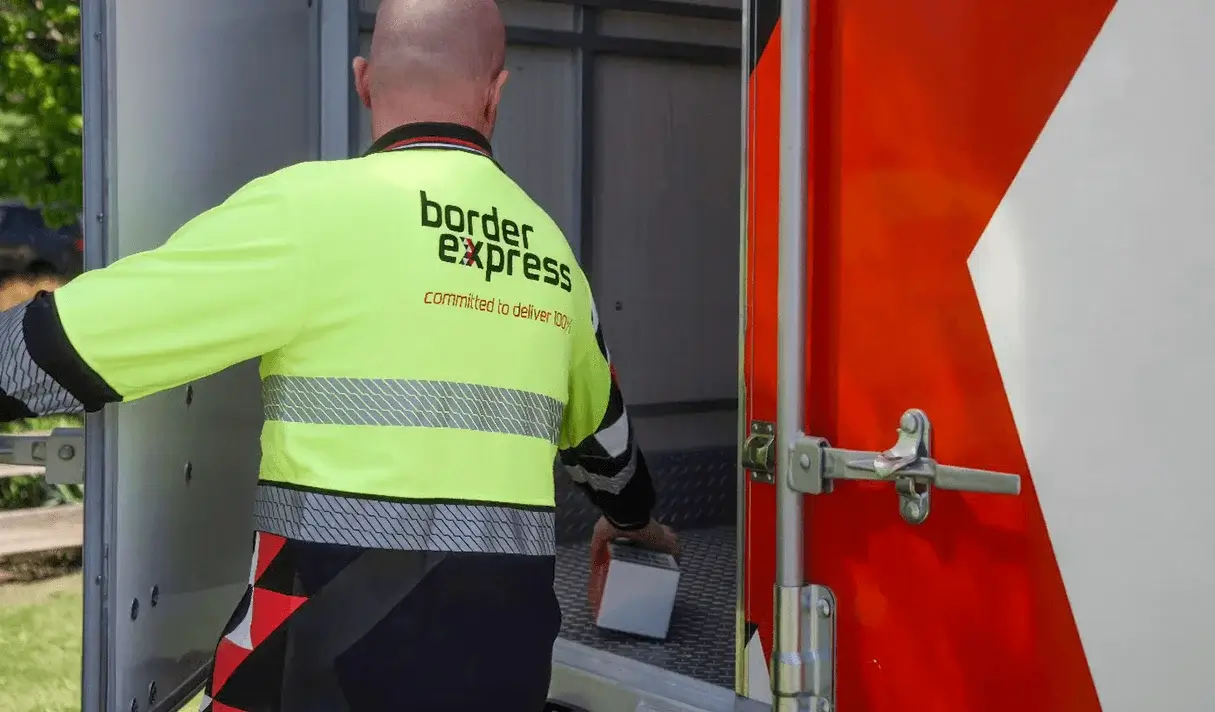News & Stories
Behind the Scenes: A Day in the Life at Border Express
June 2024

We looked behind-the-scenes, at a day in the life of a Fleet Manager. Where teamwork and efficient processes ensure smooth logistics, and to learn more about what goes into making sure our deliveries run smoothly.
A typical day in the life of a Fleet Manager
A typical day involves overseeing the daily operations of trucks and drivers, coordinating delivery schedules, handling safety protocols, and addressing customer enquiries. Fleet Managers work closely with the pickup team to ensure freight moves smoothly to depots and onto receiving branches. The day is fast paced, requiring quick problem-solving and constant planning to ensure customer satisfaction.
When a driver arrives on site with a bulk consignment, they use a PDA to scan and take custody of the shipment. The goods are loaded and secured, providing customers visibility that their shipment is at the branch. The shipments are then sorted by destination and delivery requirements. They are dispatched to the appropriate trucks, each with specific requirements like tailgate delivery. The team plans the most effective routes, drivers scan and load shipments, and QR codes are used to update the system, giving network-wide visibility that the shipment is on board for delivery. Upon delivery, the driver uses their PDA to get a signature or record an ATL (Authority to Leave).
Coordination is key
Coordination ensures seamless operations and timely deliveries. The team works closely with:
- The Inbound team, focused on dispatching deliveries within scheduled windows.
- Customer service to address issues and special customer instructions.
- The PM team, focused on moving freight to the next destination.
- L&OD for training and onboarding.
- Compliance to ensure all safety requirements are met.
- Sales and BDMs to onboard new customers and keep existing ones happy.
Three main KPIs are monitored to ensure operational efficiency: Safety, Cost, and Service. Safety is always the top priority. Some Cost and Service metrics include on-time delivery, vehicle utilisation, driver performance, and fuel efficiency. The new FUSO trucks’ telematics help monitor idling, route optimisation, braking, and speeding. Regular vehicle maintenance prevents breakdowns and ensures better performance.
Adaptability and contingency planning are crucial in handling unexpected issues or disruptions in the logistics process. The COVID-19 pandemic underscored the importance of having plans for breakdowns, delivery delays, and driver shortages. Proactivity and flexibility are key, with staff cross-trained to cover roles when needed, giving them a broader perspective on other team members’ responsibilities.
Training and Development
Training and development are vital to keeping up with the demands of the logistics industry. The L&OD (Learning and Organisational Development) team offers excellent training programs to enhance skills and knowledge. For example, a fast-track program allows staff to meet various people inside and outside the business, including suppliers, providing a mini-MBA experience. This keeps staff engaged and continuously learning.
Compliance with industry regulations and safety standards is ensured through a scheduled maintenance plan followed by the maintenance workshop. Close collaboration with the compliance and safety teams helps identify areas for improvement and implement corrective actions to stay updated with industry changes.
Teamwork and Collaboration
Teamwork and collaboration are enhanced through a daily midday meeting to update the team on operational activities and discuss challenges. This meeting fosters a sense of teamwork and allows addressing frustrations and improving processes. Attendees include fleet allocators, the Inbound team, parcel supervisors, the radio room, safety, the CX team, and the GM.
At Border Express, our commitment to efficient operations and teamwork ensures we deliver excellence every day.






